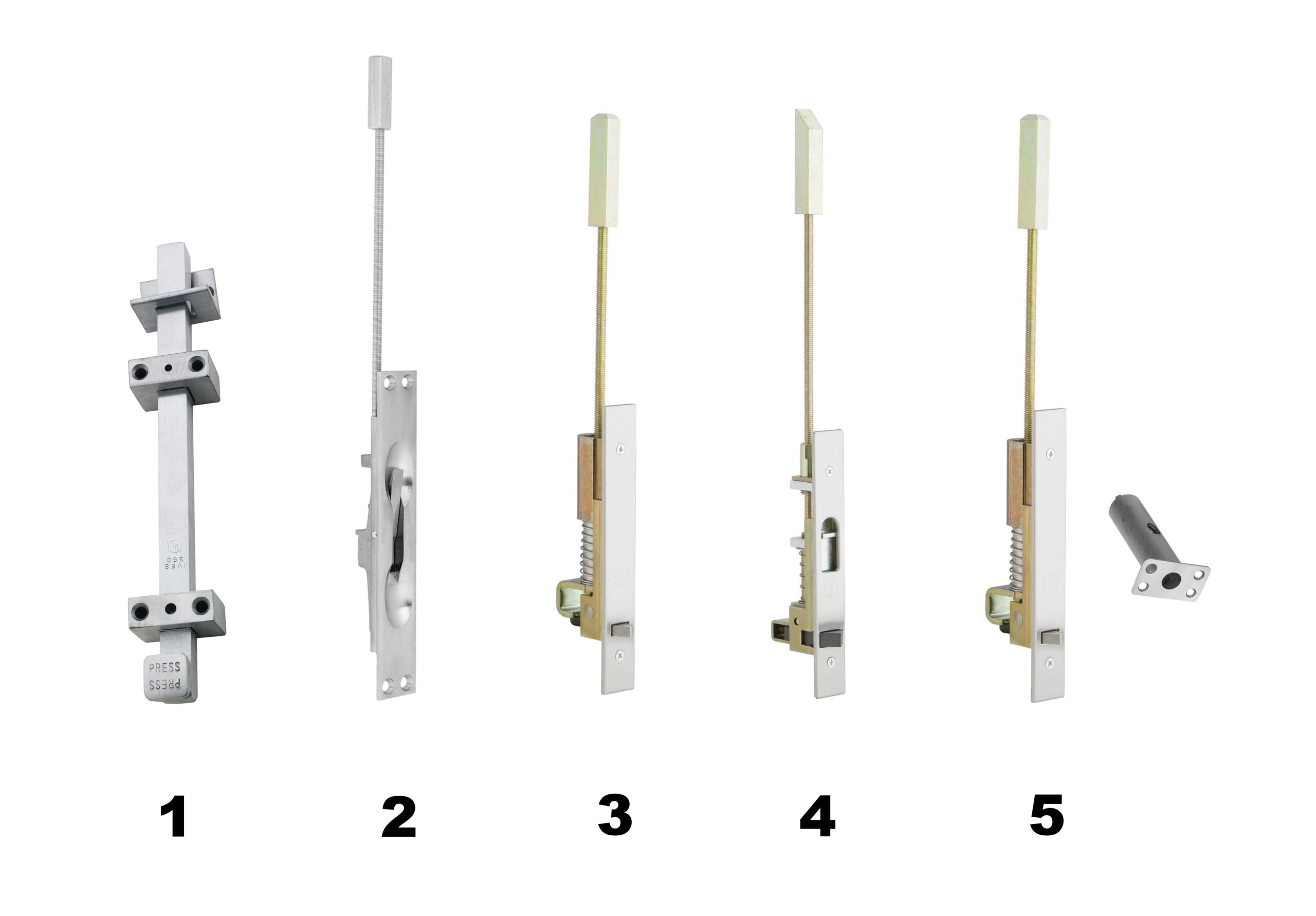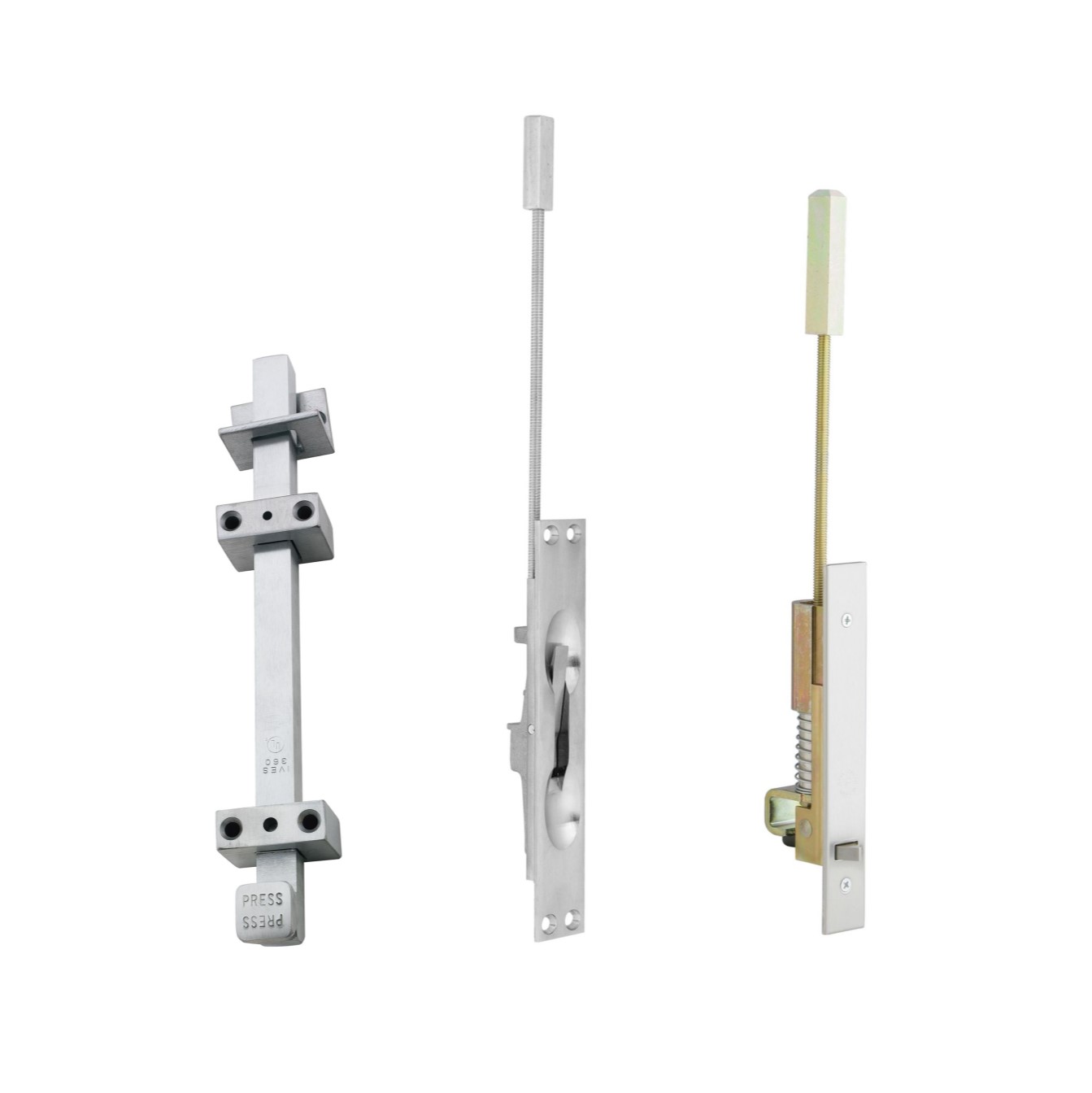
1 – surface bolt, 2 – manual flush bolt, 3 – automatic flush bolt, 4 – constant latching flush bolt, 5 – automatic flush bolt with auxiliary fire pin
As a member of BHMA’s Codes, Government, and Industry Affairs Committee, one of my goals is to help “fix” the confusing code requirements related to doors and hardware. I can hear some of you saying, “ALL code requirements are confusing…” but in the last 20ish years the committee has done a great job of helping to clarify the intent of the codes and standards with regard to door openings. With that said, there’s still work to be done.
One section of the I-Codes that caused a lot of confusing was the section called “Bolt Locks.” Although the requirements of this section are intended to apply to the flush bolts and surface bolts that are used to secure the inactive leaf of a pair of doors, a common misinterpretation was that this section applied to dead bolts.
Another problem with the Bolt Locks section was that it permitted manual flush bolts in certain locations based on the use group and occupant load, without including qualifying information about locations where positive latching hardware was required – like fire door assemblies and corridor doors in health care facilities. If someone looked at the Bolt Locks section without being familiar with the positive-latching requirements stated in other sections of the code, they might specify or supply the incorrect type of bolt.
During the 2024 code development cycle, the CGIA spent a lot of time converting the Bolt Locks section into a table that addressed the various types of flush bolts, taking into account some of the qualifications that were missing before. The 2024 edition includes this table as well as definitions for manual, automatic, and constant-latching bolts and a definition for the term dead bolt.
For more information about this change, refer to Section 1010.2.4 in the 2024 IBC.
You need to login or register to bookmark/favorite this content.










Lori, We have typically called for manual flush bolts on a second leaf in a retail storefront without panic devices that is left open during business hours. The second leaf is not required for egress. What’s not clear from this chart is if we don’t need egress from the inactive leaf, can we still use manual flush bolts or should we be considering using two active leaves?
Hi Brian –
This is a fantastic question, and I don’t have a solid answer. Technically, the exceptions that allowed manual flush bolts in the Bolt Locks section did not include mercantile occupancies. We all know that this is a common application in retail, but the other issue is that the intent of the code is that when an inactive leaf has manual flush bolts, it isn’t supposed to have “dummy hardware.” Would a stationary push bar be considered dummy hardware? In my opinion it could give a building occupant the impression that they could push on the inactive leaf for egress (how many times have we all done that??).
When we submitted the proposal to add the table, we didn’t try to change any of the existing requirements – we just organized them into the table. So this same question about mercantile occupancies existed before and still exists without a good answer. The IBC requires “doors provided for egress purposes” to comply with the codes (here’s more on that: https://idighardware.com/2023/08/decoded-doors-provided-for-egress-purposes-2/). The second leaf serving a retail occupancy probably isn’t required in order to meet the egress capacity requirements, but what is its purpose? Is it provided for egress purposes? I think so.
Like I said, I don’t have a definitive answer. I have this on my wish list to see if we can address it one way or another in the next code development cycle, but that will be for the 2030 codes. In the meantime, I would love to see two active leaves for this application because it’s better functionally and it would solve the code issues/questions. I know it’s more expensive to have panic hardware on both leaves, but another option would be to have two single doors that look very similar to a pair – each door with a deadbolt or deadlatch.
I’m open to ideas or discussion!
– Lori